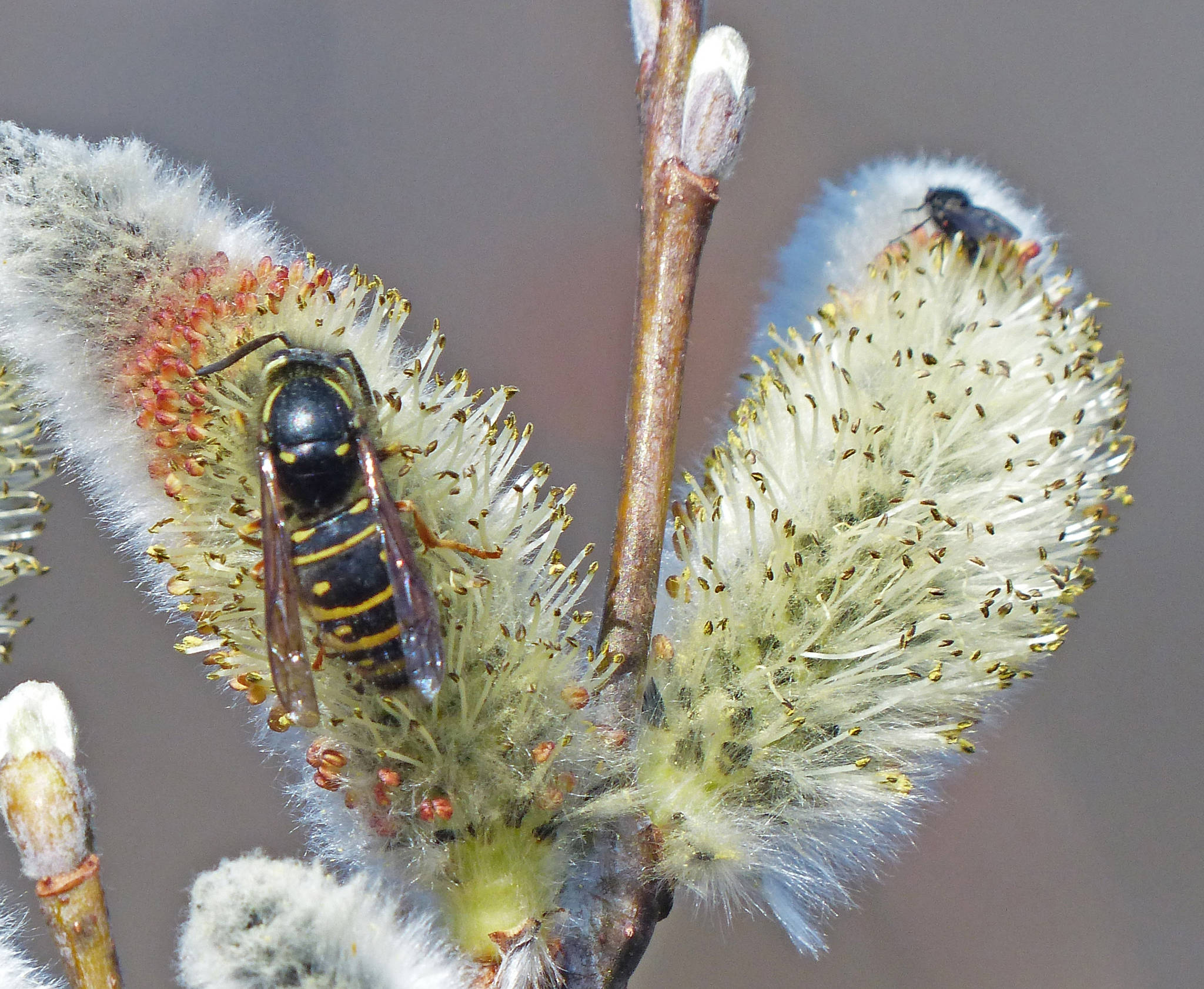On a recent walk on Gustavus’ nagoonberry trail, the larger forms of wildlife were absent or in hiding. But my naturalist friend and I spotted a wasp clinging to one of the last goldenrod inflorescences, not moving at all, just resting. That observation led to a brief discussion of “wasp” versus “hornet” versus “yellowjacket” — what’s the difference? So later that day, we did a little online research.
The term “hornet” is officially applied to certain European wasps, one of which is found as an alien in eastern North America. However, we tend to be quite casual in how we apply common names for organisms, and sometimes we just call all wasps “hornets,” even though that is not quite correct.
“Wasp” is a good general term for a variety of Hymenoptera that are clearly related to bees but different enough to fall into several taxonomic families. Back in the Midwest, I sometimes saw the huge, beautiful wasps known as cicada-killers as they searched among the flowers for prey. That one doesn’t occur here, but we do have other kinds of wasps, including two that make nests where we can see them.
Up under house eaves, in wood sheds, under car ports, we sometimes see the nests of paper wasps (genus Polistes). These nests are made of chewed-up wood fibers, i.e., paper. Each one consists of a more or less horizontal cluster of brood cells, suspended on a cord. Brood cells house the growing larvae, fed first by the queen and later by siblings that are workers from the first batch of larvae. The queen retires from feeding her offspring then, and just lays more eggs. Adult paper wasps feed on nectar, but the larvae are fed chewed-up insects such as caterpillars. They don’t store honey in the cells, unlike bees.
[Hawk moths in Southeast Alaska]
Another kind of wasp includes several species called yellowjackets. These wasps also chew up wood fiber to make their paper nests, but there are usually two or more clusters of brood cells, one suspended below another, and the whole works is enclosed in an oval, papery covering. (There is more paper involved with these nests than with those of the so-named paper wasps, making one wonder about the naming process). Yellowjacket nests may be suspended from branches or rafters or be constructed underground.
Years ago, on some long-forgotten project in the Midwest, I stumbled over a subterranean yellowjacket nest (a kind known locally as “bald-faced hornets”). This angered the whole colony and they took it out on me. Somehow they knew that I was the guilty disturber and not my nearby research companion.
Yellowjacket nests commonly have more brood cells than do paper wasp nests, so there are usually more workers. The wasps feed their larvae on chewed-up insects, while the adults eat both nectar and insects. Some species feed only on live prey, while others also visit carcasses, picnic tables, and succulent garbage. Certain species usurp the nests of other yellowjacket species and the host workers raise the usurper’s brood — they are brood parasites, the cuckoos of the wasp world.
The seasonal cycles of yellowjackets and paper wasps are similar. Toward the end of the summer season, a new queen emerges from her brood cell. Males are also produced at this time, and the queen finds a mate. All the males and workers die before winter, but the new queen and her fertilized eggs hibernate in the soil. She emerges in spring, builds a new nest, and installs that first batch of eggs in their brood cells, starting the cycle again.
A good walk often takes me into unexpected thought directions. It starts with a simple observation (in this case, a wasp on a flower), but one thing leads to another, and it’s fun to see what directions the thoughts take.
• Mary F. Willson is a retired professor of ecology. “On The Trails” is a weekly column that appears every Wednesday.

